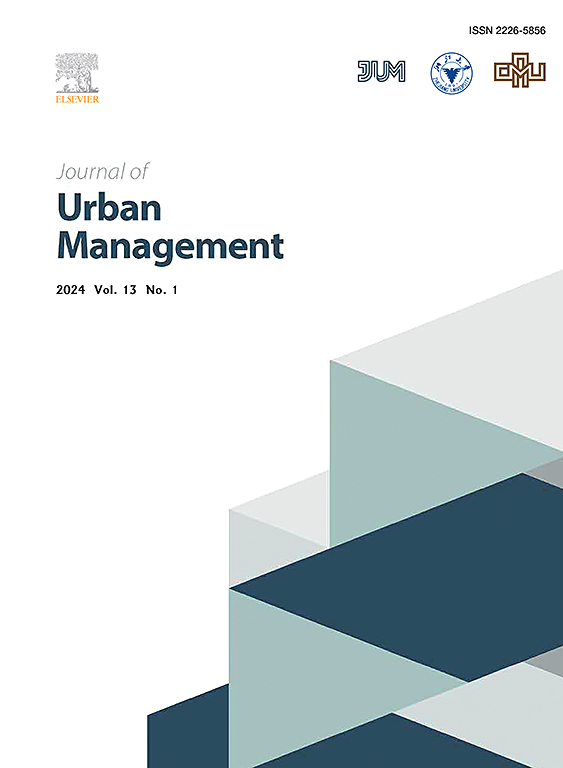在破旧的社区中为培养居民的归属感而开展的振兴工作的定性调查:身份是否重要?
IF 5
2区 社会学
Q1 URBAN STUDIES
引用次数: 0
摘要
全球南部的历史街区面临着城市核心缩小和绅士化等挑战,影响着居民的社会文化动态。本定性研究旨在确定在振兴过程中导致历史建筑恶化的关键因素,并探讨这些因素对居民对伊朗萨南达吉市 Aghazaman 街区的依恋程度的影响。通过半结构式访谈从 17 位专家那里收集了数据。分析遵循了布劳恩和克拉克的六步主题方法:熟悉数据、生成初始代码、搜索主题、审查主题、定义和命名主题以及编写报告。这一过程从 54 个代码中确定了五个主题:(1) 强化身份认同、动机和所有权;(2) 建设包容和充满活力的社区;(3) 确保社会经济适应性和居民赋权;(4) 促进功能适应性以达到标准生活;(5) 加强基础设施以实现与环境相连的生活。这些主题说明了在活化过程中影响居民归属感的因素,并展示了身份认同的形成如何增强对破旧社区的归属感,从而加强活化工作。本研究为解决培养居民依恋关系所涉及的各个方面提供了一个整体框架,而依恋关系是促进持续活化工作的一个关键因素。从实证角度来看,活化工作需要整合文化价值、培养邻里感情和维护身份认同。虽然全面的社区参与方法得到了认可,但本研究也强调,即使在社区驱动的举措中,也需要以身份认同为导向的干预措施,以解决在增强依恋和社区福祉方面的不足。本文章由计算机程序翻译,如有差异,请以英文原文为准。
A qualitative investigation of revitalisation efforts to foster residents’ attachment in dilapidated neighbourhoods: Is identity a matter?
Historic neighborhoods in the Global South face challenges like urban core shrinkage and gentrification, impacting residents' socio-cultural dynamics. This qualitative study aims to identify critical aspects contributing to the deterioration of historic fabrics during the revitalisation process and explore their influence on residents' attachment to the Aghazaman neighbourhood in Sanandaj City, Iran. Data was collected from 17 experts using semi-structured interviews. The analysis followed Braun and Clarke's six-step thematic approach: familiarization with the data, generating initial codes, searching for themes, reviewing themes, defining and naming themes, and producing the report. This process identified five themes from 54 codes: (1) strengthening identity, motivation, and ownership; (2) building inclusive and vibrant communities; (3) ensuring socioeconomic adaptation and residents' empowerment; (4) boosting functional adaptation for standard living; and (5) enhancing infrastructure for connected living with the environment. These themes illustrate the factors influencing residents' attachment during the revitalisation process and demonstrate how identity formation can enhance attachment to dilapidated neighbourhoods, thereby strengthening revitalisation efforts. The study contributes to an integral framework for addressing the aspects involved in nurturing residents' attachment, which is a key factor in facilitating sustained revitalisation efforts. From an empirical perspective, there is a need for revitalisation efforts to integrate cultural values, nurture neighbourhood attachment, and preserve identity. While holistic community engagement approaches are recognised, the study also emphasises the need for identity-driven interventions to address shortcomings in enhancing attachment and community well-being, even in community-driven initiatives.
求助全文
通过发布文献求助,成功后即可免费获取论文全文。
去求助
来源期刊

Journal of Urban Management
URBAN STUDIES-
CiteScore
9.50
自引率
4.90%
发文量
45
审稿时长
65 days
期刊介绍:
Journal of Urban Management (JUM) is the Official Journal of Zhejiang University and the Chinese Association of Urban Management, an international, peer-reviewed open access journal covering planning, administering, regulating, and governing urban complexity.
JUM has its two-fold aims set to integrate the studies across fields in urban planning and management, as well as to provide a more holistic perspective on problem solving.
1) Explore innovative management skills for taming thorny problems that arise with global urbanization
2) Provide a platform to deal with urban affairs whose solutions must be looked at from an interdisciplinary perspective.
 求助内容:
求助内容: 应助结果提醒方式:
应助结果提醒方式:


